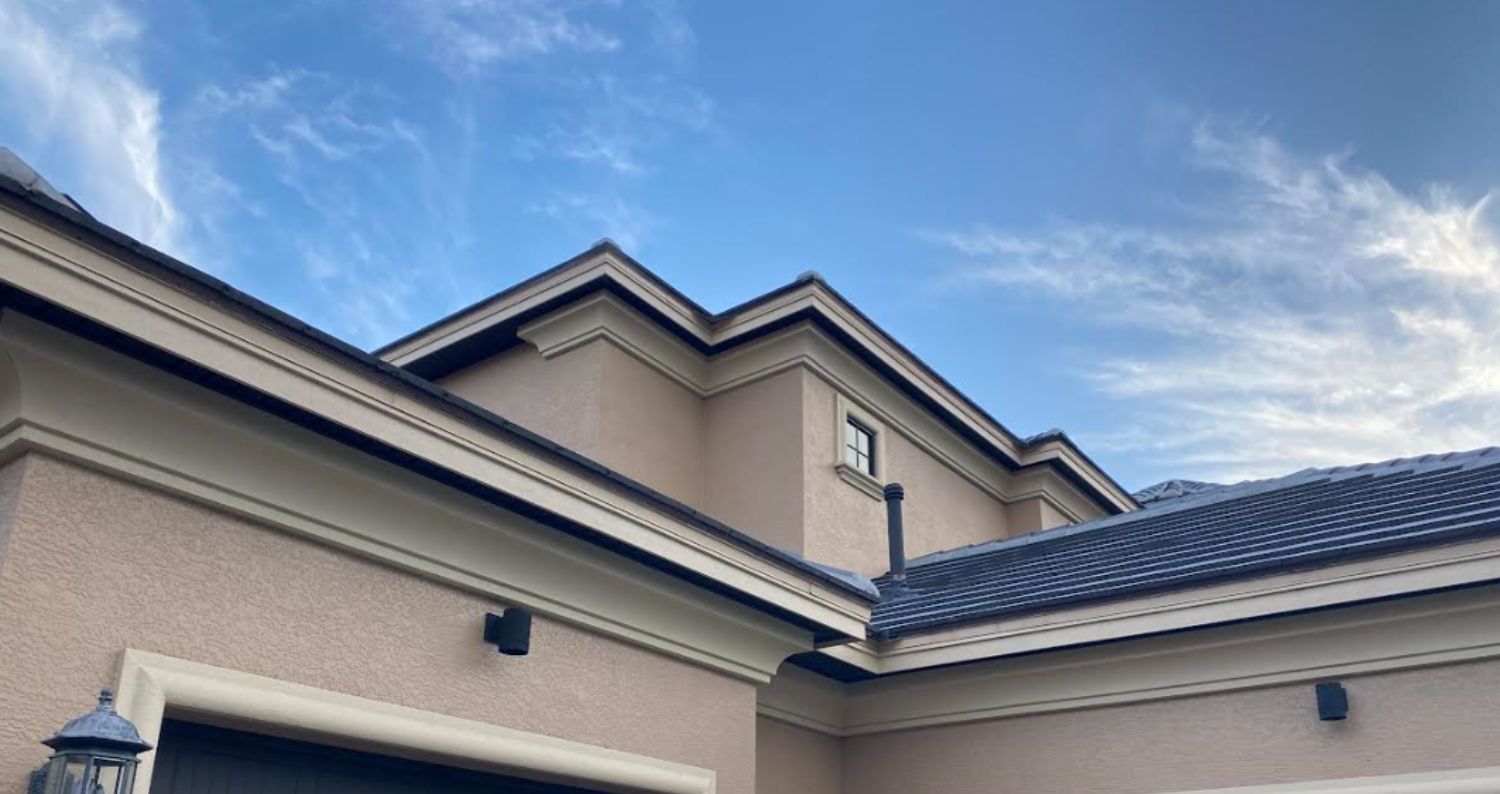
Article-at-a-Glance
- Gutters play a crucial role in directing rainwater away from your home.
- Local building codes often dictate gutter requirements for residential properties.
- Home inspectors check for proper installation, condition, and compliance with local codes.
- Lack of gutters can lead to failed inspections, depending on local regulations.
- Maintaining or upgrading gutters can enhance your home’s integrity and increase its value.
Understanding the Role of Gutters in Home Inspections
When you think about a home inspection, you might picture a professional checking the foundation, roof, and electrical systems. But did you know that something as seemingly simple as gutters can also be a point of focus? Gutters are like the unsung heroes of a home’s exterior; they quietly do the heavy lifting of directing rainwater away from the house. This keeps your basement dry, protects your siding, and prevents erosion around your home’s foundation.
Gutter Requirements for Safety and Compliance
Now, gutters aren’t just there for show. They’re a critical part of a home’s drainage system and, therefore, they have to meet certain standards. During an inspection, professionals will look at your gutters to ensure they’re doing their job correctly. Most importantly, they’ll check if they comply with local building codes, which can vary quite a bit. In some areas, gutters are an absolute must, while in others, they might not be as strictly required.
Decoding Gutter Regulations for Home Inspections
Let’s dive into the regulations that could impact your home inspection. It’s all about location, location, location. Building codes can differ from one municipality to another, and what’s okay in one place might not fly in another. But don’t worry, you don’t need to become a legal expert overnight. I’ll walk you through the basics of what you need to know.
National and Local Codes Governing Gutter Installation
First up, we have the national codes, like the International Residential Code (IRC), which many local building codes are based on. These codes often outline the minimum requirements for gutter size, slope, and downspout capacity. But here’s where it gets local: your city or county might have additional requirements or modifications to these national standards. They might require gutters in all homes, or only in those with certain roof designs or in specific areas prone to heavy rainfall.
Distinguishing Between Recommended and Mandatory Guidelines
It’s crucial to know the difference between what’s recommended and what’s required. Recommended guidelines are like best practices—things that are suggested for optimal home maintenance. Mandatory guidelines, on the other hand, are rules that you’ve got to follow to pass inspection. These are the ones that, if not met, could mean a red mark on your inspection report. So, always check with your local building department to know which gutter rules are the “musts” for your area.
Downspout Specifications and Water Discharge
Let’s talk downspouts. They’re just as important as gutters because they’re responsible for carrying the water from the roof to the ground. Inspectors will check if your downspouts are big enough to handle the water flow without getting clogged. They’ll also see if they’re positioned to direct water away from the house—because water pooling around the foundation is a big no-no.
Here’s what to keep in mind: downspouts should extend at least five feet away from your home’s foundation. This helps prevent any water damage or soil erosion close to your home. And if you’ve got a sump pump, the discharge point needs to be clear of the downspout’s path. You want to make sure all that water has somewhere to go that’s not back into your basement.
And remember, in some areas, you might even have regulations about where your downspout water can go. Some places don’t allow water to be discharged into the municipal sewer system. So, you might need to have a dry well or a rain garden as part of your setup. It’s all about keeping your home—and your neighbor’s—safe from unwanted water.
Assessing Gutter Condition and Maintenance
Condition matters. A gutter filled with leaves or one that’s sagging won’t pass muster. Inspectors will take a good look at your gutters to make sure they’re clean, securely attached, and free of rust or holes. It’s not just about them being there; they have to be in good working order.
When Lack of Gutters Leads to Failed Inspections
So, can a house fail an inspection because it doesn’t have gutters? In some cases, yes. Especially if local codes require them. Without gutters, water can cause all sorts of problems, like seeping into the basement or weakening the foundation. And these are big issues that can lead to a failed inspection.
Identifying Potential Red Flags for Inspectors
Inspectors have a keen eye for red flags that could indicate gutter problems. These include water stains on siding, overflows, or signs of soil erosion near the foundation. They’ll also look out for paint peeling off the fascia board right behind the gutter, which often means water is sneaking behind the gutter and not being carried away properly.
Gutter-Related Factors Contributing to Home Inspection Setbacks
It’s not just the presence of gutters that inspectors are looking at—it’s the whole picture. If gutters are improperly sloped, they won’t effectively move water away from your home. If they’re too small for the roof’s square footage, they could overflow during heavy rains. And if the downspouts are too few or too far apart, water might not be channeled away as it should be. All these factors can contribute to a less-than-stellar inspection report.
Another thing to consider is the material. Gutters can be made from various materials like aluminum, vinyl, or even copper. Some materials require more maintenance than others, and some have longer lifespans. Your inspector might take note of this, especially if it looks like your gutters aren’t up to the task of protecting your home from water damage.
Rectifying Gutter Issues Pre-Inspection
If you’re getting ready for an inspection, it’s a good idea to give your gutters some TLC. This means cleaning them out, checking for leaks, and making sure they’re securely attached to your home. If you’re not comfortable on a ladder, hire a professional—it’s worth it to avoid any hiccups during the inspection.
Essential Gutter Maintenance Tips
Here’s a quick list of gutter maintenance tips to help you prep for an inspection:
- Clean your gutters at least twice a year—once in the spring and once in the fall.
- Inspect for leaks, especially at joints and corners, and seal them with gutter sealant.
- Make sure gutters are securely attached and haven’t pulled away from the house.
- Check that the downspouts are free of obstructions and direct water away from the foundation.
By keeping up with these maintenance tasks, you’re not just prepping for an inspection; you’re also extending the life of your gutters and protecting your home from water damage.
For example, during one home inspection, the inspector noted that the gutters were overflowing and causing water to pool around the foundation. This was due to clogged downspouts. The homeowner had neglected regular cleaning, and as a result, faced potential foundation issues—a costly fix that could have been avoided with simple maintenance.
Upgrades and Fixes to Meet Inspection Standards
Consider the case of a homeowner who upgraded from traditional open gutters to a gutter guard system. Not only did this pass the inspection with flying colors, but it also reduced the maintenance required to keep the gutters clear of debris.
If your gutters are old or damaged, it might be time for an upgrade. New gutters can improve your home’s appearance and functionality. And if you’re in an area with lots of trees, consider adding gutter guards to keep leaves and twigs out. This can be a smart move that saves you time and hassle in the long run.
When choosing new gutters, think about size and material. Bigger gutters can handle more water, which is great if you live in a wet climate. And materials like aluminum or copper can offer durability and a nice look. Just make sure whatever you choose meets local code requirements.
Long-term Advantages of Proper Gutter Installation
Installing gutters properly isn’t just about getting through a home inspection—it’s about protecting your investment in the long run. Gutters that are well-designed and correctly installed prevent a myriad of problems, from roof damage to basement flooding. Plus, they help maintain the soil around your home, preserve your landscaping and siding, and prevent mold and mildew growth.
By investing in quality gutters and ensuring they are installed correctly, you’re also avoiding costly repairs down the line. Water damage can be expensive to fix, and by channeling water away from your home effectively, gutters are a first line of defense. It’s a smart move that pays off in the protection and longevity of your home.
How Gutters Protect Your Home’s Integrity and Value
Think of gutters as the guardians of your home’s integrity. By controlling the flow of rainwater, they protect your foundation, prevent soil erosion, and keep the siding and masonry from staining and decay. This not only maintains the structural integrity of your home but also preserves its aesthetic appeal—which is a big plus if you ever decide to sell.
Properly functioning gutters also prevent water from seeping into your home, which can lead to mold and mildew issues. By keeping your home dry and free of these problems, gutters contribute to a healthier living environment and can save you from potential health issues and remediation costs.
FAQ
It’s natural to have questions about gutters and home inspections. Let’s tackle some of the most common queries homeowners have, so you can be well-prepared and confident in your home’s ability to pass inspection.
Can a House Fail Inspection Due to Missing Gutters?
Yes, a house can fail an inspection due to missing gutters, particularly if the local building codes require them. Without gutters, rainwater can cause significant damage to the foundation, siding, and landscaping of a home. If the local code dictates that gutters are necessary for proper water drainage, their absence can be a reason for a failed home inspection.
What Are the Basic Gutter Requirements for a Home Inspection?
The basic gutter requirements for a home inspection typically include proper installation, appropriate sizing for the home, secure attachment to the structure, and a clear path for water to be directed away from the home. Inspectors will also look for signs of damage, such as rust, holes, or sagging, which could impede the gutter’s functionality.
How Can I Tell if My Gutters Are up to Code?
To determine if your gutters are up to code, you’ll need to familiarize yourself with the local building codes regarding gutter systems. These can often be found on your city or county’s official website or by contacting the local building department. Check your gutters against these regulations, paying close attention to size, material, and installation standards.
How Often Should Gutters Be Replaced or Maintained?
Gutters should be maintained regularly, at least twice a year, to ensure they are free from debris and blockages. Depending on the material and the climate you live in, gutters may need to be replaced every 20 to 40 years. However, if you notice signs of significant wear and tear or damage, it may be time to replace them sooner.
Are There Alternatives to Traditional Gutters That Meet Inspection Standards?
Yes, there are alternatives to traditional gutters that can meet inspection standards, such as rain dispersal systems and integrated gutter systems. These alternatives can be effective in managing rainwater and are often designed to blend seamlessly with the home’s exterior. However, it’s important to ensure that any alternative gutter system you consider is approved by your local building codes.
continue reading
Related Posts
Article-at-a-Glance: All About Soffit Installation in Melbourne, FL Soffits play



